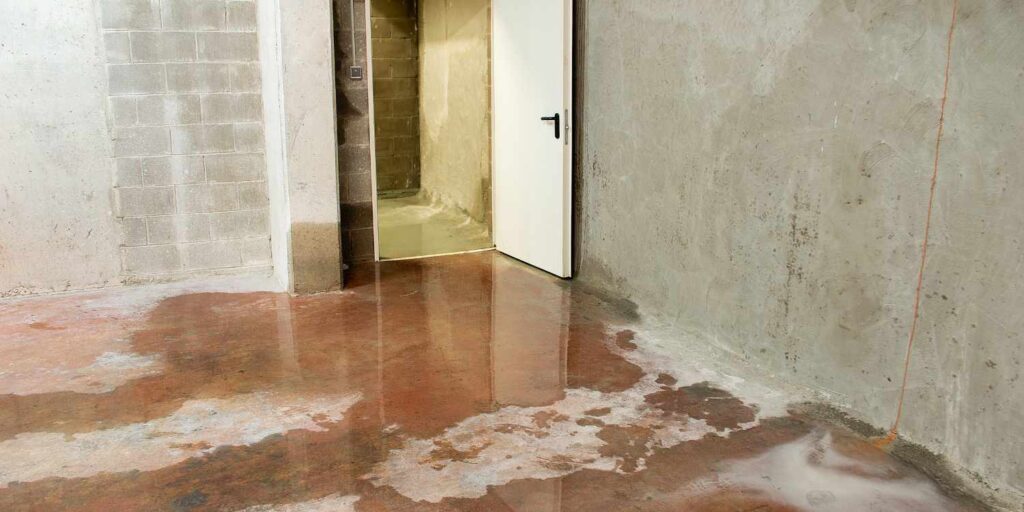Your basement is more than just a storage space – it’s an integral part of your home’s foundation. However, it’s also prone to various problems, including water damage and structural issues. Recognizing the signs of these issues early can save you from costly repairs and ensure the safety and integrity of your home. In this comprehensive guide, we’ll explore common basement problems, such as water damage and structural issues, and provide simple tips to identify them.
Understanding Basement Problems: Basements are susceptible to a range of issues due to their location below ground level. Water seepage, poor drainage, and soil settlement can lead to water damage, mold growth, and structural instability. Identifying these problems early is essential to prevent further damage and maintain a healthy living environment.
Common Problems of Water Damage:

- Dampness and Moisture: One of the most obvious signs of water damage in basements is dampness or moisture on walls, floors, or ceilings. This can result from leaks, condensation, or groundwater infiltration. Pay attention to musty odors and the presence of mold or mildew, as they indicate prolonged moisture exposure.
- Water Stains: Look for water stains or discoloration on walls, floors, or ceilings, as they indicate past or ongoing water intrusion. These stains may appear as dark patches or streaks and can worsen over time if not addressed promptly.
- Puddles or Standing Water: Examine the basement floor for puddles or standing water, especially after heavy rainfall or snowmelt. Prolonged water accumulation can lead to structural damage and create an ideal environment for mold growth.
- Efflorescence: Efflorescence is a white, powdery substance that forms on concrete surfaces due to mineral deposits left behind by evaporating water. It often indicates water penetration through the basement walls or floor and should be addressed to prevent further moisture-related problems.
Common Signs of Structural Issues:

- Cracks in Walls or Floors: Cracks in basement walls or floors are a common sign of structural issues. These cracks may start small but can widen over time, indicating movement or settlement of the foundation. Pay attention to the size, location, and direction of the cracks, as well as any associated signs of water damage.
- Bowing or Buckling Walls: Bowing or bulging basement walls suggest excessive pressure from soil or water, compromising the structural integrity of the foundation. If left unaddressed, these issues can lead to wall collapse and extensive property damage.
- Sagging or Uneven Floors: Sagging or uneven basement floors may indicate problems with the underlying support structure, such as deteriorating joists or beams. This can result from water damage, soil settlement, or inadequate foundation support and requires immediate attention to prevent further damage.
- Doors or Windows Sticking: Difficulty opening or closing basement doors and windows can be a sign of foundation movement or structural shifting. Misaligned frames and jammed openings indicate underlying issues that should be addressed to ensure the safety and functionality of the basement space.
How to Identify Basement Problems: Now that you know the common signs of basement problems, let’s discuss how to identify them effectively:
- Regular Inspections: Conduct regular inspections of your basement to check for signs of water damage and structural issues. Look for dampness, mold growth, cracks, and bulging walls during these inspections.
- Check Exterior Drainage: Inspect the exterior of your home to ensure proper drainage away from the foundation. Clear debris from gutters and downspouts, and ensure that they direct water away from the house to prevent water infiltration into the basement.
- Monitor Humidity Levels: Use a hygrometer to monitor humidity levels in your basement. High humidity can contribute to mold growth and exacerbate water damage, so it’s essential to keep humidity levels within a healthy range (ideally below 50%).
- Address Plumbing Issues: Inspect plumbing fixtures and pipes for leaks or signs of water damage. Repair any leaks promptly to prevent water infiltration into the basement.
- Grading and Drainage Improvements: Properly grading the soil around your home and ensuring adequate drainage can help prevent water from pooling around the foundation, reducing the risk of soil movement.
- Installing French Drains: French drains can redirect excess water away from the foundation, helping to alleviate hydrostatic pressure and prevent soil erosion.
- Foundation Repair: Depending on the severity of the issues, foundation repair techniques such as slab jacking, piering, or underpinning may be necessary to stabilize the foundation and prevent further movement.
- Waterproofing: Addressing any water-related issues, such as poor drainage or leaky pipes, can help mitigate foundation problems caused by excess moisture.
Conclusion: Identifying common basement problems, such as water damage and structural issues, is crucial for maintaining the integrity and safety of your home. By recognizing the signs early and taking proactive measures to address them, you can prevent further damage and ensure a healthy living environment. Regular inspections, monitoring humidity levels, addressing drainage issues, and promptly addressing plumbing leaks are essential steps in maintaining a dry, structurally sound basement. With vigilance and timely intervention, you can protect your home from the damaging effects of basement problems and enjoy peace of mind for years to come.





